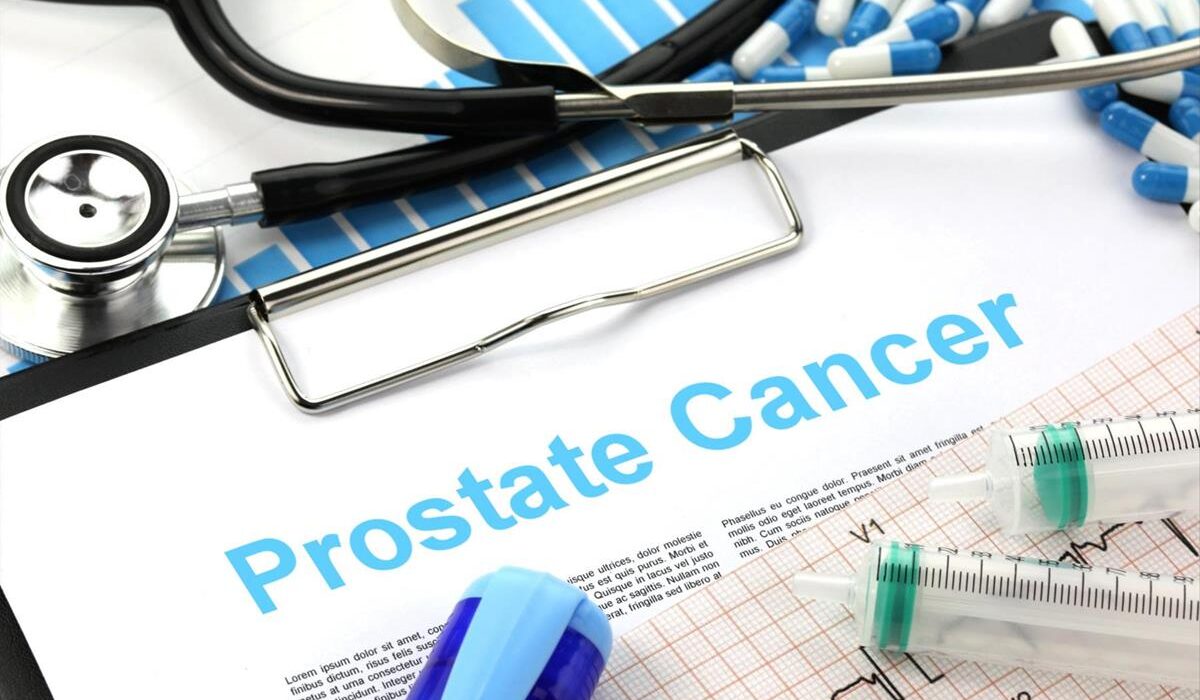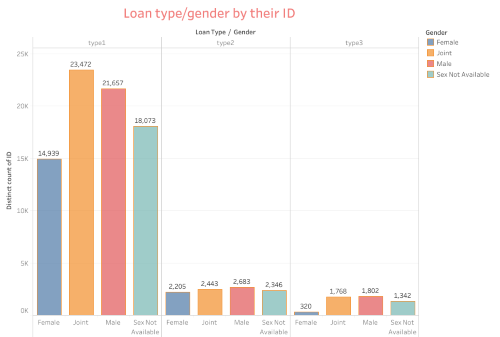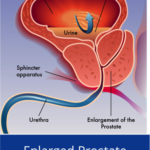What is the relationship between ejaculation and prostate cancer?

In the realm of men’s health, there is a popular question: What is the relationship between ejaculation and prostate cancer? A Study of nearly 30,000 health professionals posited that men who ejaculated 21 times a month had a 20% lower risk of prostate cancer, than men who ejaculated four to seven times a month.
Imagine a scenario where something as pleasurable and intimate as ejaculation could potentially offer protection against a disease as insidious as prostate cancer.
This notion challenges conventional wisdom and opens doors to new avenues of research and exploration.
From the physiological mechanisms that underpin ejaculation to the intricate pathways that govern prostate cancer development, every aspect of this relationship is ripe for investigation and discovery.
Join us on a journey into the depths of male health as we unravel the mysteries surrounding ejaculation and prostate cancer, and uncover the secrets that may hold the key to a healthier future for men everywhere.
What Is Prostate Cancer?
Prostate cancer is a prevalent malignancy that affects the prostate gland, a crucial component of the male reproductive system.
Understanding this condition, its risk factors, detection methods, and its correlation with ejaculation patterns is vital for promoting prostate health and preventing associated complications.
Understanding Prostate Cancer
Prostate cancer develops when abnormal cells within the prostate gland grow uncontrollably, forming tumors.
These tumors can vary in aggressiveness and may metastasize to other parts of the body if left untreated.
Understanding the underlying mechanisms of prostate cancer development is crucial for effective management and prevention strategies.
Risk Factors for Prostate Cancer
Several factors can increase an individual’s risk of developing prostate cancer, including age, family history, race, and certain genetic mutations.
Additionally, lifestyle factors such as diet, smoking, and exposure to environmental toxins may also contribute to prostate cancer risk.
Identifying these risk factors can aid in implementing targeted screening and prevention measures.
Importance of Early Detection
Early detection of prostate cancer significantly improves treatment outcomes and survival rates.
Screening tests such as digital rectal exams (DRE) and prostate-specific antigen (PSA) tests can help detect prostate cancer in its early stages when treatment is most effective.
Encouraging regular screening among at-risk individuals is crucial for timely diagnosis and intervention.
Anatomy of the Prostate Gland
The prostate gland is a small, walnut-sized organ located below the bladder and surrounding the urethra.
It plays a vital role in male reproductive function by producing seminal fluid, which nourishes and transports sperm during ejaculation.
Understanding the anatomy and functions of the prostate gland provides insights into its susceptibility to diseases such as prostate cancer.
Exploring the Prostate Gland
The prostate gland consists of several lobes divided by fibrous tissue. It is composed of glandular and muscular tissue responsible for producing and expelling prostatic fluid during ejaculation.
Proper functioning of the prostate gland is essential for maintaining reproductive health and fertility in men.
Functions of the Prostate Gland
The primary function of the prostate gland is to secrete prostatic fluid, a key component of semen. This fluid enhances sperm motility and viability, facilitating fertilization.
Additionally, the prostate gland contributes to urinary continence by exerting pressure on the urethra to prevent leakage.
Role in Reproductive Health
The prostate gland plays a crucial role in male reproductive health by supporting sperm function and ensuring optimal fertility.
Any abnormalities or disturbances in prostate function, such as those caused by prostate cancer, can impact reproductive capabilities and overall well-being.
Introduction to Ejaculation
Ejaculation is the process by which semen is expelled from the male reproductive tract during sexual climax.
It involves a series of coordinated muscular contractions and physiological responses that culminate in the release of semen from the penis.
Understanding the intricacies of ejaculation is essential for comprehending its relationship with prostate health.
Definition of Ejaculation
Ejaculation refers to the expulsion of seminal fluid from the male reproductive system, typically during sexual arousal and climax.
This physiological process is controlled by the central nervous system and involves the coordination of various muscle groups to facilitate semen release.
Physiology of Ejaculation
Ejaculation is initiated by sexual stimulation, which triggers a cascade of neural signals in the brain and spinal cord.
These signals stimulate the rhythmic contraction of the pelvic floor muscles and the vas deferens, propelling semen through the urethra and out of the body. Hormonal factors also play a role in regulating ejaculation and semen production.
Factors Influencing Ejaculation
Ejaculation can be influenced by various factors, including psychological arousal, hormonal balance, and neurological function.
Psychological factors such as stress, anxiety, and mood can affect sexual arousal and ejaculation latency. Additionally, certain medications, medical conditions, and lifestyle factors may impact ejaculatory function.
The Link Between Ejaculation and Prostate Health
Emerging research suggests a potential link between ejaculation frequency and prostate health.
Understanding the relationship between ejaculation and prostate cancer risk is a topic of interest in the field of men’s health and oncology.
Investigating this correlation may provide insights into prostate cancer prevention and treatment strategies.
Research Findings on Ejaculation and Prostate Health
Several studies have explored the association between ejaculation frequency and prostate cancer risk.
While some research suggests that frequent ejaculation may reduce the risk of developing prostate cancer, other studies have yielded inconclusive or contradictory results.
Further investigation is warranted to elucidate the underlying mechanisms and establish definitive conclusions.
Frequency of Ejaculation and Prostate Cancer Risk
Evidence suggests that men who ejaculate more frequently may have a lower risk of developing prostate cancer.
This observation has prompted speculation about the potential protective effects of regular ejaculation on prostate health.
However, the precise mechanisms underlying this relationship remain uncertain and require additional research to validate.
Potential Mechanisms Explaining the Relationship
Several hypotheses have been proposed to explain the purported link between ejaculation frequency and prostate cancer risk.
These include the clearance of carcinogenic substances from the prostate gland, hormonal modulation, and the promotion of prostate tissue turnover.
However, further studies are needed to corroborate these theories and elucidate the biological mechanisms at play.
Exploring Ejaculation Frequency Studies
Numerous epidemiological studies have investigated the association between ejaculation frequency and prostate cancer incidence.
While some studies have reported a potential protective effect of frequent ejaculation against prostate cancer, others have failed to demonstrate a significant correlation.
Discrepancies in study findings may be attributed to methodological differences and confounding variables.
Studies Analyzing Ejaculation Frequency
Several large-scale cohort studies have examined the relationship between ejaculation frequency and prostate cancer risk.
These studies have utilized self-reported data on sexual activity and ejaculation habits to assess their association with prostate cancer incidence.
However, discrepancies in study design and participant demographics may influence the reliability of the findings.
Variances in Study Findings
The findings of ejaculation frequency studies have been mixed, with some reporting a decreased risk of prostate cancer with higher ejaculation frequency, while others have found no significant association.
Methodological differences, such as study population characteristics, data collection methods, and statistical analyses, may contribute to these variances.
Implications for Prostate Cancer Prevention
The potential association between ejaculation frequency and prostate cancer risk has significant implications for prostate cancer prevention strategies.
If regular ejaculation indeed confers a protective effect against prostate cancer, promoting healthy sexual activity habits may represent a novel approach to reducing disease incidence.
However, further research is needed to validate these findings and inform public health recommendations.
Understanding Ejaculation Patterns
Ejaculation patterns can vary widely among individuals and may be influenced by biological, psychological, and sociocultural factors.
Understanding the nuances of ejaculation frequency and its determinants is essential for contextualizing its potential impact on prostate health and disease risk.
Normal Ejaculation Patterns
Normal ejaculation patterns encompass a wide range of frequencies, with some individuals ejaculating more frequently than others.
Factors such as age, relationship status, and overall health can influence an individual’s ejaculation habits.
It is essential to recognize that variations in ejaculation frequency are normal and may not necessarily indicate underlying pathology.
Factors Influencing Ejaculation Frequency
Several factors can influence ejaculation frequency, including age, sexual activity level, relationship status, and overall health.
Younger individuals and those in sexually active relationships may ejaculate more frequently than older individuals or those with limited sexual activity.
Additionally, psychological factors such as stress, anxiety, and depression can affect libido and ejaculatory function.
Cultural and Societal Influences
Cultural and societal norms surrounding sexuality and sexual expression can also impact ejaculation patterns.
Societies that promote open communication about sexual health and encourage healthy sexual practices may have different ejaculation habits compared to those with more conservative attitudes.
Understanding these cultural influences is essential for providing culturally sensitive healthcare and education.
Ejaculation and Prostate Cancer Risk Reduction
While the relationship between ejaculation frequency and prostate cancer risk remains a topic of debate, adopting healthy lifestyle habits can help reduce overall cancer risk.
Strategies for maintaining prostate health include regular exercise, a balanced diet rich in fruits and vegetables, avoiding tobacco and excessive alcohol consumption, and practicing safe sex.
Additionally, staying informed about prostate cancer screening guidelines and discussing individual risk factors with healthcare providers can facilitate early detection and intervention.
Strategies for Maintaining Prostate Health
Maintaining prostate health involves adopting a multifaceted approach that encompasses various lifestyle modifications and preventive measures.
Engaging in regular physical activity, consuming a diet rich in antioxidants and essential nutrients, and avoiding known risk factors such as smoking and excessive alcohol consumption can help support prostate function and reduce cancer risk.
Role of Sexual Activity in Prostate Cancer Prevention
Emerging evidence suggests that sexual activity, including ejaculation frequency, may play a role in prostate cancer prevention.
Regular ejaculation has been hypothesized to facilitate the expulsion of potentially carcinogenic substances from the prostate gland, thereby reducing the risk of malignant transformation.
However, further research is needed to confirm these findings and elucidate the underlying mechanisms.
Lifestyle Modifications for Lowering Risk
In addition to sexual activity, adopting healthy lifestyle habits can contribute to prostate cancer prevention and overall well-being.
This includes maintaining a healthy weight, managing stress levels, getting adequate sleep, and avoiding exposure to environmental toxins.
Incorporating these lifestyle modifications into daily routines can help mitigate cancer risk and promote long-term prostate health.
Prostate Cancer Screening Guidelines
Prostate cancer screening aims to detect the disease in its early stages when treatment is most effective.
Current screening guidelines recommend discussing the benefits and limitations of screening with healthcare providers to make informed decisions based on individual risk factors and preferences.
Importance of Screening for Prostate Cancer
Screening for prostate cancer involves performing digital rectal exams (DRE) and prostate-specific antigen (PSA) tests to assess prostate health and detect abnormalities.
Early detection of prostate cancer allows for timely intervention and improved treatment outcomes. However, screening may also lead to false-positive results and unnecessary interventions, highlighting the importance of informed decision-making.
Recommended Screening Tests
The American Cancer Society recommends that men aged 50 and older discuss the option of prostate cancer screening with their healthcare providers.
Men at increased risk, such as those with a family history of prostate cancer or African American men, may benefit from screening starting at age 45.
Screening frequency and modalities should be individualized based on risk assessment and shared decision-making.
Discussing Screening Options with Healthcare Providers
Engaging in open and honest discussions with healthcare providers is essential for understanding the risks and benefits of prostate cancer screening.
Healthcare providers can help individuals make informed decisions by providing accurate information, addressing concerns, and considering personal preferences and values.
Shared decision-making empowers individuals to take an active role in their healthcare journey and promotes optimal health outcomes.
Other Factors Influencing Prostate Cancer Risk
In addition to sexual activity and ejaculation frequency, several other factors can influence prostate cancer risk.
These include dietary habits, physical activity levels, environmental exposures, and genetic predisposition.
Understanding the complex interplay of these factors is essential for comprehensive cancer risk assessment and prevention strategies.
Diet and Prostate Health
A diet rich in fruits, vegetables, whole grains, and lean proteins is associated with a reduced risk of prostate cancer.
Conversely, consuming excessive amounts of red meat, processed foods, and saturated fats may increase cancer risk.
Incorporating anti-inflammatory foods, such as omega-3 fatty acids and antioxidants, into the diet can help promote prostate health and reduce inflammation.
Exercise and Physical Activity
Regular physical activity has been shown to lower the risk of developing prostate cancer and improve overall health outcomes.
Engaging in moderate-intensity exercise for at least 150 minutes per week, as recommended by national guidelines, can help maintain a healthy weight, reduce inflammation, and enhance immune function.
Incorporating strength training exercises can further support prostate health and musculoskeletal function.
Environmental Exposures
Exposure to environmental toxins and carcinogens may contribute to prostate cancer development.
Occupational hazards, such as exposure to pesticides, heavy metals, and industrial chemicals, may increase cancer risk among certain populations.
Additionally, lifestyle factors such as smoking, air pollution, and UV radiation exposure may also influence prostate cancer incidence.
Minimizing exposure to known carcinogens and adopting protective measures can help reduce cancer risk and promote overall health.
Addressing Common Misconceptions
Misconceptions and myths surrounding ejaculation and prostate cancer abound, leading to confusion and misinformation.
Addressing these misconceptions through education and awareness is essential for promoting accurate understanding and informed decision-making among individuals.
Debunking Myths About Ejaculation and Prostate Cancer
One common myth suggests that abstaining from ejaculation can prevent prostate cancer.
However, there is no conclusive evidence to support this claim, and some studies have even suggested that regular ejaculation may have protective effects against prostate cancer.
Dispelling such myths helps individuals make informed choices about their sexual health and cancer prevention strategies.
Clarifying Misinformation
Misinformation about prostate cancer screening and treatment options can also contribute to confusion and anxiety among individuals.
Providing accurate information about the benefits and limitations of screening tests, as well as available treatment modalities, can empower individuals to make informed decisions about their healthcare.
Open communication with healthcare providers and access to reliable resources are essential for clarifying misconceptions and promoting proactive health management.
Psychological Impact of Prostate Cancer
A diagnosis of prostate cancer can have profound psychological effects on individuals and their loved ones.
Understanding and addressing the emotional aspects of prostate cancer is integral to comprehensive cancer care and overall well-being.
Emotional Reactions to a Prostate Cancer Diagnosis
Receiving a prostate cancer diagnosis can evoke a range of emotions, including fear, anxiety, anger, and sadness.
Individuals may experience uncertainty about the future, concerns about treatment side effects, and fears of mortality.
Providing emotional support and access to counseling services can help individuals cope with the psychological impact of their diagnosis and navigate the challenges of cancer treatment.

Coping Strategies for Prostate Cancer Patients
Developing effective coping strategies is essential for managing the emotional distress associated with prostate cancer.
Engaging in supportive relationships, maintaining open communication with healthcare providers, and participating in support groups can provide a sense of community and belonging.
Additionally, practicing relaxation techniques, such as meditation, mindfulness, and deep breathing exercises, can help alleviate stress and promote emotional well-being.
Importance of Mental Health Support
Addressing the mental health needs of prostate cancer patients is paramount for holistic cancer care.
Integrating mental health services into cancer treatment plans can help individuals cope with psychological distress, enhance resilience, and improve quality of life.
By prioritizing mental health support, healthcare providers can foster a supportive and compassionate care environment that promotes healing and recovery.
Current Research and Future Directions
Ongoing research efforts continue to explore the complex interplay between ejaculation, prostate health, and cancer risk.
By advancing our understanding of these relationships, researchers aim to develop novel prevention strategies, improve early detection methods, and enhance treatment outcomes for individuals affected by prostate cancer.
Ongoing Studies on Ejaculation and Prostate Cancer
Numerous research studies are currently underway to investigate the association between ejaculation frequency and prostate cancer risk.
These studies utilize advanced epidemiological methods, biomarker analyses, and imaging techniques to elucidate the underlying mechanisms and clinical implications of this relationship.
By leveraging interdisciplinary approaches, researchers seek to generate robust evidence that informs prostate cancer prevention and management strategies.
Potential Areas for Further Investigation
While existing research provides valuable insights into the link between ejaculation and prostate health, several knowledge gaps remain.
Future studies may explore the long-term effects of ejaculation frequency on prostate cancer incidence, the role of genetic and epigenetic factors in modulating risk, and the impact of lifestyle interventions on disease prevention.
Additionally, research focusing on diverse populations and incorporating patient-reported outcomes can enhance the relevance and applicability of findings to real-world settings.
Emerging Therapeutic Approaches
In addition to preventive measures, emerging therapeutic approaches hold promise for improving prostate cancer treatment outcomes.
Advances in precision medicine, immunotherapy, and targeted drug delivery are revolutionizing cancer care and offering new hope for patients with advanced disease.
By harnessing the latest scientific innovations, researchers aim to develop personalized treatment strategies that maximize efficacy while minimizing side effects.
Conclusion
In conclusion, prostate cancer is a complex disease with multifactorial etiology and variable clinical outcomes.
Understanding the interplay between ejaculation, prostate health, and cancer risk is essential for promoting early detection, implementing preventive measures, and supporting individuals affected by prostate cancer.
By fostering collaboration among researchers, healthcare providers, and policymakers, we can advance our knowledge of prostate cancer and improve patient care.
Together, we can strive towards a future where prostate cancer is effectively prevented, detected, and treated, ultimately leading to better health outcomes and quality of life for all individuals.









